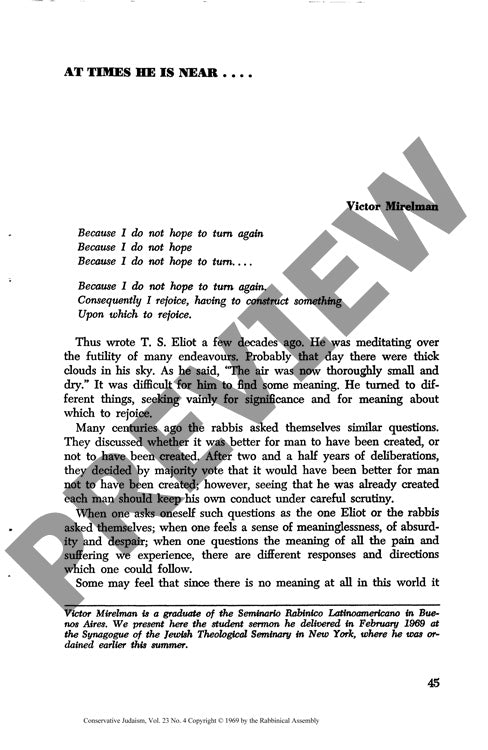At Times He Is Near
Couldn't load pickup availability
When God feels absent and life seems devoid of meaning, how should humans confront existential despair? Through comparative analysis of T.S. Eliot, Jean-Paul Sartre, Albert Camus, and rabbinic literature—particularly Midrash Tanhuma—a striking contrast emerges between existentialist and religious responses to life's apparent meaninglessness. While Sartre advocates creating meaning ex nihilo and Camus considers suicide philosophy's fundamental problem, the rabbinic text offers a different path through its declaration that God "at times is near, at times is not near." This cyclical understanding frames both meaning and meaninglessness as natural fluctuations rather than permanent states, diverging from existentialist attempts to either manufacture artificial meaning or embrace illusion. Textual analysis reveals that authentic hope differs from mere optimism by acknowledging suffering while maintaining faith in meaning's eventual return. This perspective, embodied in Jewish historical resilience and later echoed in Viktor Frankl's logotherapy, provides a framework for sustaining purpose through adversity: the experience of meaning during "high moments" enables endurance through periods of spiritual darkness.

More Information
-
Physical Description
-
Publication Information
Published 1969
ISBN
-
Publication Credits
Victor Mirelman

